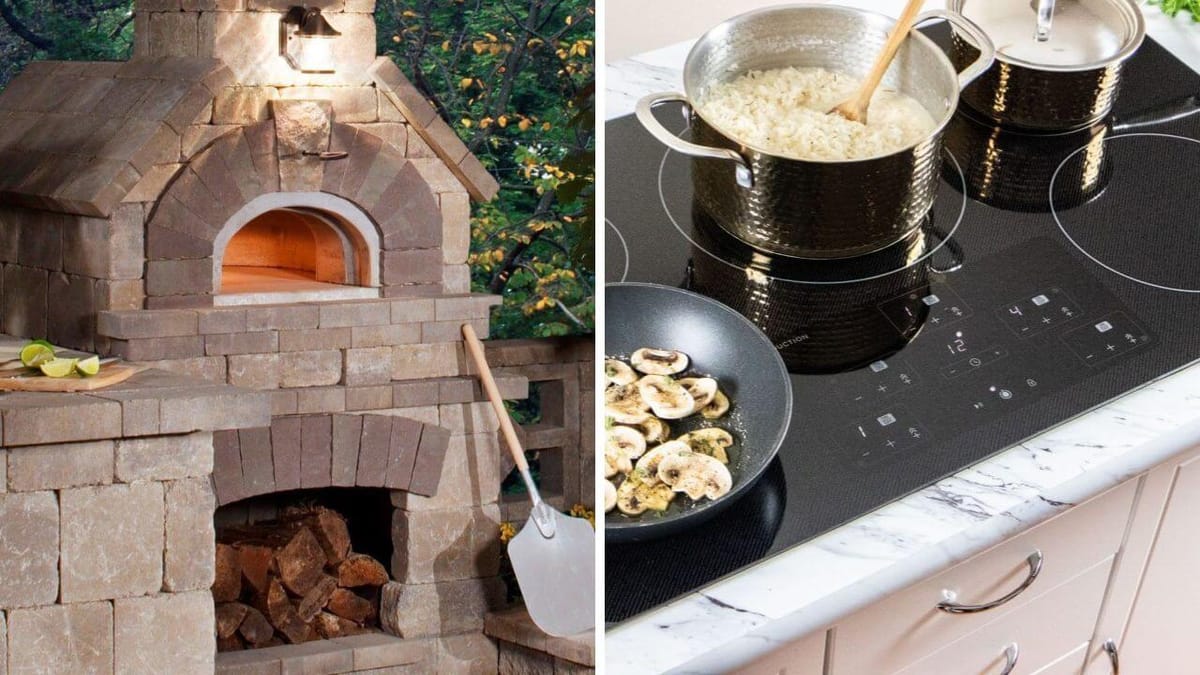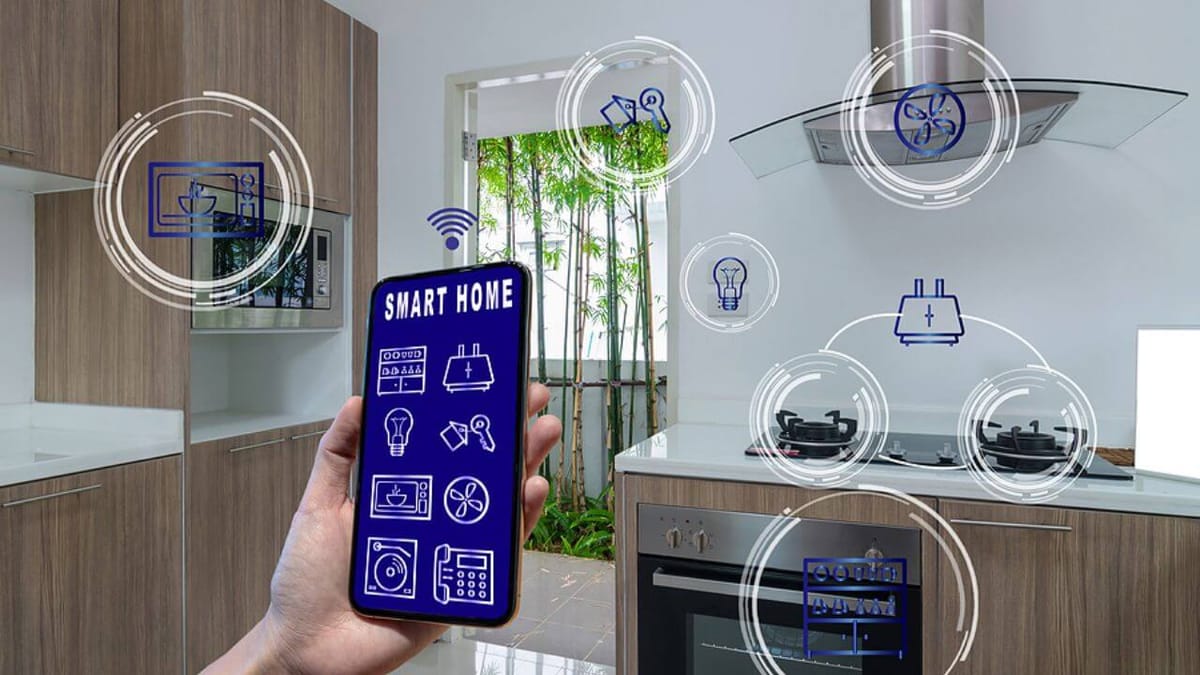From Wood-Fired Ovens to Induction Cooktops: The Evolution of Cooking Methods
Discover the fascinating journey of cooking methods from rustic wood-fired ovens to modern induction cooktops. Enjoy the journey in this post!

Key Takeaways:
- Cooking methods have evolved significantly from ancient wood-fired ovens to modern induction cooktops.
- Each cooking method reflects the technological advancements and cultural shifts of its time.
- Understanding the history of cooking methods can enhance our appreciation for modern culinary conveniences.

The Dawn of Cooking: Wood-Fired Ovens
Cooking has been an essential part of human life since the dawn of civilization. The earliest cooking methods involved open fires, which were later enclosed in wood-fired ovens.
These ovens, made from clay or stone, were the heart of ancient kitchens. They provided a consistent heat source, allowing for more controlled and varied cooking techniques.
Wood-fired ovens were not just about cooking; they were communal hubs. Families and communities gathered around these ovens, sharing stories and meals.
The aroma of freshly baked bread wafting through the air was a testament to the oven's central role in daily life. This method of cooking laid the foundation for future innovations, emphasizing the importance of heat control and communal dining.

The Rise of Coal and Gas Stoves
As societies progressed, so did their cooking methods. The 19th century saw the introduction of coal and gas stoves, which revolutionized home cooking. These stoves offered more precise temperature control compared to wood-fired ovens, making cooking more efficient and less labor-intensive.

A coal stove, though an improvement, had its drawbacks. It required constant tending and produced a lot of soot. A gas stove, on the other hand, was a game-changer. It was cleaner, easier to use, and provided instant heat. This shift from wood to gas marked a significant technological leap, paving the way for modern cooking appliances.

The Electric Stove Revolution
The early 20th century brought another major advancement: the electric stove. This innovation transformed kitchens, offering a cleaner and more efficient cooking method. Electric stoves eliminated the need for fuel storage and reduced the risk of fire hazards, making kitchens safer and more convenient.
Electric stoves also introduced the concept of temperature regulation. With adjustable dials, cooks could easily control the heat, leading to more precise cooking. This development not only improved the cooking process but also expanded culinary possibilities, allowing for more complex and delicate dishes.

The Microwave Oven: A Game Changer
The invention of the microwave oven in the mid-20th century was a groundbreaking moment in the history of cooking. Microwaves use electromagnetic radiation to heat food quickly and efficiently, drastically reducing cooking times. This innovation was particularly appealing to busy households and working professionals.
Microwave ovens also introduced new cooking techniques, such as defrosting and reheating, which were not possible with traditional stoves. Despite initial skepticism, microwaves have become a staple in modern kitchens, highlighting the ongoing evolution of cooking methods and the constant quest for convenience.

The Advent of Convection Ovens
Convection ovens, which emerged in the latter half of the 20th century, brought another layer of sophistication to cooking. These ovens use fans to circulate hot air, ensuring even cooking and reducing cooking times. This technology addressed the limitations of traditional ovens, which often had uneven heat distribution.
Convection ovens are particularly popular in professional kitchens, where consistency and speed are crucial. They have also found their way into home kitchens, offering amateur cooks the ability to achieve professional-level results. The desire for greater performance and efficiency is what drives this innovation, which highlights the ongoing advancement in cooking technology.

The Emergence of Induction Cooktops
Induction cooktops represent the latest advancement in cooking technology. Unlike traditional stoves, induction cooktops use electromagnetic fields to directly heat pots and pans. This method is incredibly efficient, as it minimizes heat loss and provides precise temperature control.
Induction cooktops are also safer than gas or electric stoves, as they remain cool to the touch and reduce the risk of burns. Their sleek design and advanced features make them a popular choice in modern kitchens. This technology reflects the ongoing trend towards energy efficiency and safety in cooking appliances.

The Role of Cultural Influences
Cultural influences have played a significant role in the evolution of cooking methods. Different regions have developed unique cooking techniques based on available resources and culinary traditions. For example, the tandoor oven, used in Indian cuisine, is a clay oven that cooks food at high temperatures, imparting a distinct smoky flavor.

Similarly, the Japanese hibachi grill and the Italian wood-fired pizza oven are examples of how cultural preferences shape cooking methods. These traditional techniques continue to be celebrated and preserved, even as modern technology advances. They remind us of the rich culinary heritage that underpins contemporary cooking practices.
The Impact of Technological Advancements
Technological advancements have been the driving force behind the evolution of cooking methods. Innovations such as the pressure cooker, slow cooker, and sous-vide machine have expanded the culinary landscape, offering new ways to prepare and enjoy food. These devices cater to different cooking styles and preferences, from quick and convenient to slow and meticulous.
The integration of smart technology into cooking appliances is another significant development. Smart ovens and cooktops can be controlled remotely via smartphones, allowing for greater convenience and precision. This trend towards automation and connectivity reflects the broader technological shifts in our daily lives, making cooking more accessible and enjoyable.
Environmental Considerations
As awareness of environmental issues grows, there is a greater emphasis on sustainable cooking methods. Induction cooktops, for example, are more energy-efficient than traditional stoves, reducing overall energy consumption. Similarly, solar ovens, which use sunlight to cook food, offer an eco-friendly alternative to conventional cooking methods.
The push for sustainability is also evident in the rise of plant-based diets and the use of locally sourced ingredients. These practices reduce the carbon footprint associated with food production and transportation. By adopting environmentally conscious cooking methods, we can contribute to a more sustainable future while enjoying delicious and nutritious meals.
The Future of Cooking
Ongoing technological advancements and shifting consumer preferences are likely to influence the future of cooking. Innovations such as 3D food printing and lab-grown meat have the potential to revolutionize the culinary landscape, offering new possibilities for food preparation and consumption.
At the same time, there is a growing appreciation for traditional cooking methods and artisanal techniques. This blend of old and new reflects the dynamic nature of cooking, where innovation and tradition coexist. The desire for improved performance, convenience, and sustainability will undoubtedly drive further cooking method evolution in the future.
Summary
From wood-fired ovens to induction cooktops, the evolution of cooking methods has transformed kitchens worldwide. Starting with the rustic charm of wood-burning stoves and the reliable heat of cast iron stoves, cooking technology has advanced to include gas ranges and gas burners, offering more control and efficiency than a cast iron stove. Despite the semi-successful gas oven, the journey continued towards the precision and rapid heating of induction cooking, marking a significant leap in culinary innovation.
Each innovation has built upon the previous one, reflecting technological advancements and cultural shifts. Understanding this history not only enhances our appreciation for modern conveniences but also inspires us to explore new culinary possibilities. As we embrace the future of cooking, we can look forward to a blend of tradition and innovation, creating a rich and diverse culinary landscape.
FAQ
What are the main advantages of induction cooktops over traditional stoves?
Induction cooktops offer several advantages over traditional stoves. They are more energy-efficient, as they directly heat the cookware, reducing heat loss.
They also provide precise temperature control, allowing for more accurate cooking. Additionally, induction cooktops are safer, as they remain cool to the touch and reduce the risk of burns.
How have cultural influences shaped cooking methods?
Cultural influences have significantly shaped cooking methods by introducing unique techniques and preferences based on regional resources and traditions. For example, the tandoor oven in Indian cuisine and the hibachi grill in Japanese cuisine reflect the culinary heritage of their respective cultures.
These traditional methods continue to be celebrated and preserved, even as modern technology advances.
What role does sustainability play in modern cooking methods?
Sustainability plays an increasingly important role in modern cooking methods. Energy-efficient appliances like induction cooktops and eco-friendly alternatives like solar ovens help reduce overall energy consumption.
Additionally, practices such as adopting plant-based diets and using locally sourced ingredients contribute to a more sustainable food system. By embracing these methods, we can enjoy delicious meals while minimizing our environmental impact.



